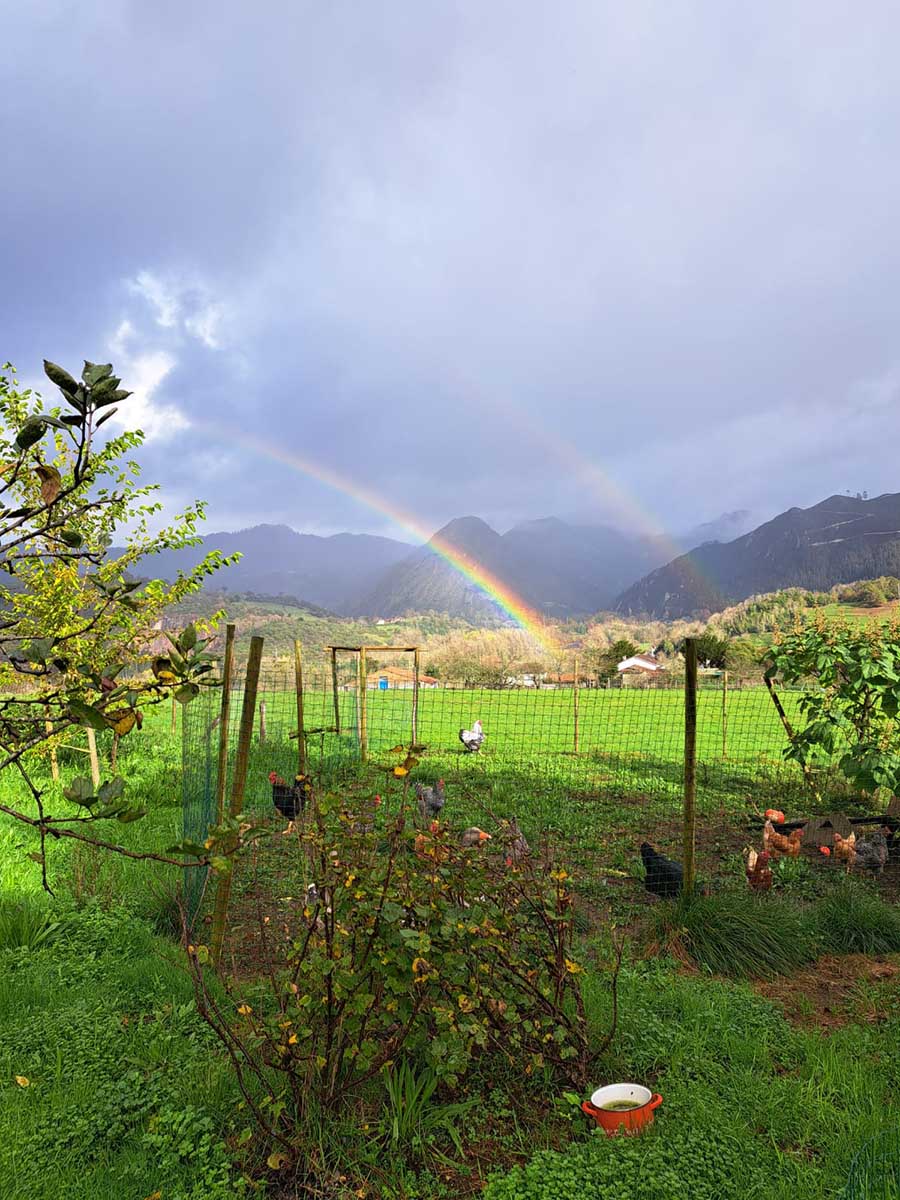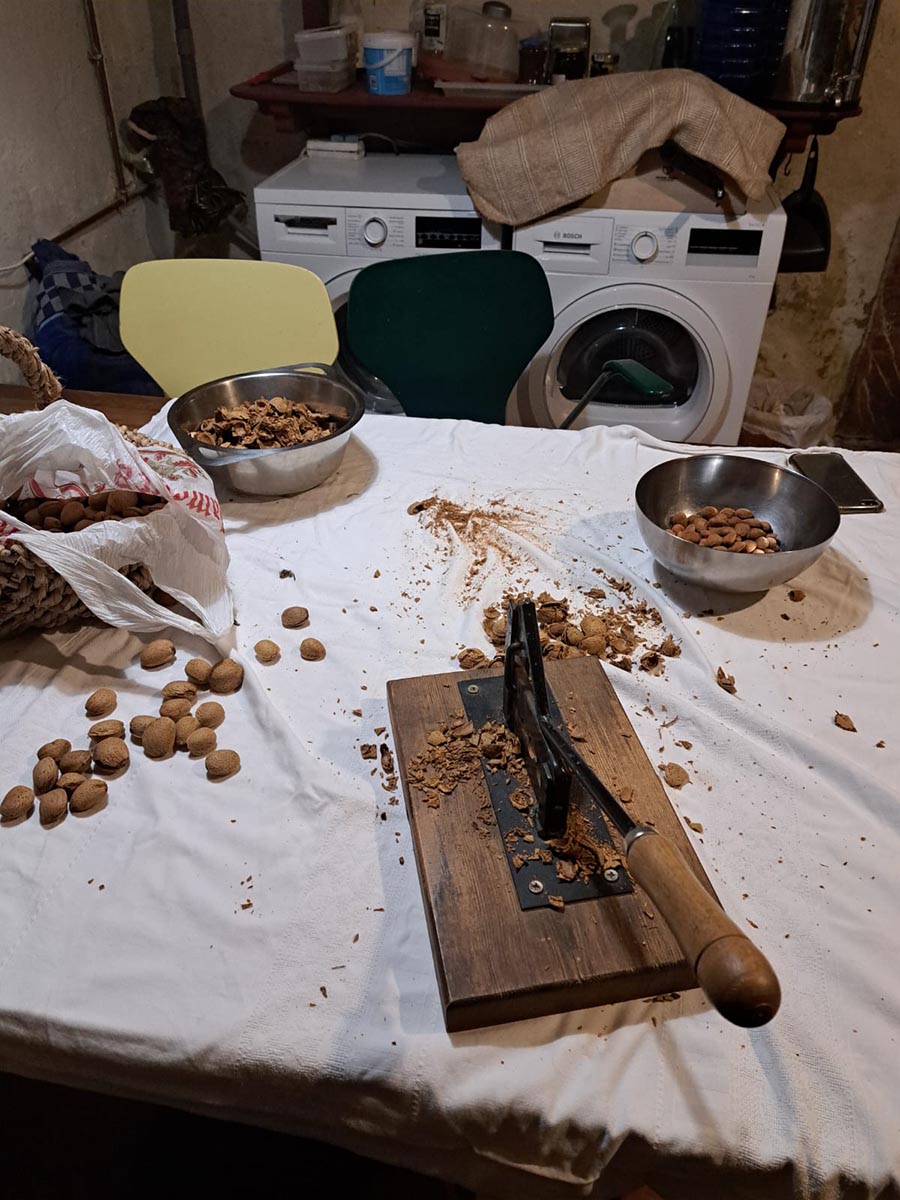The problem of desertification
As Allan Savory, creator of the method called “Holistic management”, specifies, nearly two-thirds of planet earth is subject to desertification. But let’s take a step back: why is soil so important? This element, in addition to performing numerous functions essential to life on our planet and to our lives as humans, has the basic role of storing CO2, when it is in good condition. In case of desertification, soil loses its function: this huge CO2 storage resource remains unused and neglected.
The view from Palacio de Livia, Tom and Cecilia’s residence
The problem of desertification
As Allan Savory, creator of the method called “Holistic management”, specifies, nearly two-thirds of planet earth is subject to desertification. But let’s take a step back: why is soil so important? This element, in addition to performing numerous functions essential to life on our planet and to our lives as humans, has the basic role of storing CO2, when it is in good condition. In case of desertification, soil loses its function: this huge CO2 storage resource remains unused and neglected.
Again, according to Allan Savory, who has dedicated his life to finding a solution to desertification, this problem is even bigger and more impactful than that of fossil fuels: the transition to renewable energy will not be enough to stop climate change if we do not recover soil fertility.
A paradigm shift
What we need to mitigate the effects of climate change is a real paradigm shift. After their first experience with solar panels in the Netherlands, Tom and Cecilia focused on drastically reducing their electricity consumption, deciding to live in the Sierra Nevada in a house without mains water nor electricity for about four years. But, as time went on, the couple realized that monitoring energy consumption was neither enough nor impactful enough: before their eyes they saw increasingly barren landscapes and warmer and warmer seasons.
Hence the decision to seek refuge as climate migrants in Asturias, northern Spain, a place where they have approached a lifestyle that incorporates Allan Savory’s holistic management. Through the purchase of a large piece of land and a flock of about 50 xalda sheep, indigenous to the area, Tom and Cecilia not only sought refuge in cooler areas, but also decided to make a more substantial contribution to combating climate change.
Attention and time is devoted to each activity
Through the practice of holistic management, in fact, the aim is not only to rehabilitate the land, but also to provide economic sustenance: the system is all-encompassing and involves the cohesion and collaboration of all kinds of organisms occupying the same area. This way, everything produced and used at Palacio de Livia – this is the name of the land and the couple’s historic villa – is certified organic and biological.
The rules often found on social networks – “reduce, reuse, repurpose, recycle” – are literally applied here: manure is produced naturally from the barn and sheep droppings; this manure goes to cultivate the fields, which feed Tom and Cecilia. The waste is given to the chickens, geese and ducks, which in turn help keep slugs and caterpillars away from the vegetables. All the actors on the land have a function.
Holistic management, as far as land redevelopment is concerned, involves a careful and thorough study of the land: it is necessary to know native flora and fauna in order to calculate animal movement and zoning. The method is somewhat reminiscent of crop rotation: animals graze in a defined area and move every couple of days. The calculation of these movements, however, is crucial, because it must take into account the growth of native plants, the amount of plants ingested by each animal in a day, and the defecation of the animals, which must fertilize the soil in the right amounts.
Animals and ethics
The use of animals is a topic that Allan Savory dwells on a great deal and that is also important to Tom and Cecilia. The question of ethics is often raised; in fact, generally, especially in modern-day social media ecologism, eating meat is outright demonized, starting from the – albeit correct – knowledge that raising animals is one of the major causes of fossil emissions. When speaking of intensive livestock farms, this conception is not erroneous. But according to holistic management the animals are fundamental to our survival.
Allan Savory talks about how he himself grew up believing that soil desertification was caused by the presence and movement of too many animals, but facts speak differently. Through focused and in-depth studies and after a series of mistakes made by the founder of this model himself, he came to the conclusion that desertification can be countered by recreating the natural movements of large herds and groups of herbivorous animals which, moving in flocks to protect the whole group, rid the soil of plants, eating them, and through their droppings prepare and fertilize the soil for new, lush growth.
Clearly, for Tom and Cecilia, this means that sheep meat will be on the table from time to time. However, as Bobby Gill, Director of Development and Communications at the Savory Institute, explains, the meat that is obtained through holistic management is meat that has not produced CO2 emissions, but, on the contrary, has taken some form the atmosphere, thanks to soil redevelopment.
Holistic, in the true sense of the word
I met Tom and Cecilia in Asturias, at Palacio de Livia in Triongo, working with them. This experience, though brief, gave me the opportunity to understand holistic management on a less theoretical, but very practical level. The lifestyle of this Dutch couple is nothing but a deep harmony and sharing with nature, leading to real, ancestral knowledge of the things around us. The relationship they have with the surrounding nature, their sheep and their animals in general is one of infinite respect and gratitude for the work they do, for the work that keeps us alive.
What struck me the most was the step back Tom and Cecilia took from their “city lives”: living in the midst of asphalt, supermarkets, offices and apartment buildings, it comes very easy to forget that everything we eat, everything around us is part the same system, that we are part of one single system that is locally characterized, but which involves the collaboration of the various parts for the ultimate goal of survival and life itself.
Very often, partly because of the influence of large multinational corporations and the capitalist logic aimed at endless profit, we are led to think that by doing our small part we can effect a change of course and solve the problem of climate change by eating less meat, using a bamboo toothbrush, riding a bus or a bicycle. But sometimes reality is more complex than that. Very frequently we neglect elements such as soil, which are fundamental to life for a multitude of reasons.
As Tom said during one of our conversations, switching to renewables, but also reducing energy consumption, will not be enough: for a real turnaround, much more difficult issues need to be taken in hand, such as soil, water, and forest management and the various natural resources. Unfortunately, these are not topics that can be fully investigated simply by choosing organic products at the supermarket.
On a small positive note
The topic of climate change is a source of anxiety and concern for millions of people now. Themes such as eco-anxiety are increasingly being addressed even in schools. But I would like to end on a positive note. Living together with Tom and Cecilia in the setting of Asturias made me realize how distorted the view on climate change of many people living in cities sometimes is. However, it also gave me a lot of hope.
I have come to see that, like Tom and Cecilia, many people are realizing the fallacious logic of capitalism and are seeking refuge – physically and mentally – in lower density areas, working together as a community to find tangible solutions, especially at the local level. Although I believe that the answer to the climate crisis is not a single one, clear and tangible, I firmly believe that the path to change lies in a true holistic practice, that is, an all-encompassing view of human and non-human systems, based on mutual respect and love understood as cherishing what gives us life and the whole of which we are just a tiny piece.

Graduated in Journalism, Editorial Culture and Multimedia Communication, she loves travelling and learning about cultures and languages. She is interested in social and environmental justice to raise awareness.








